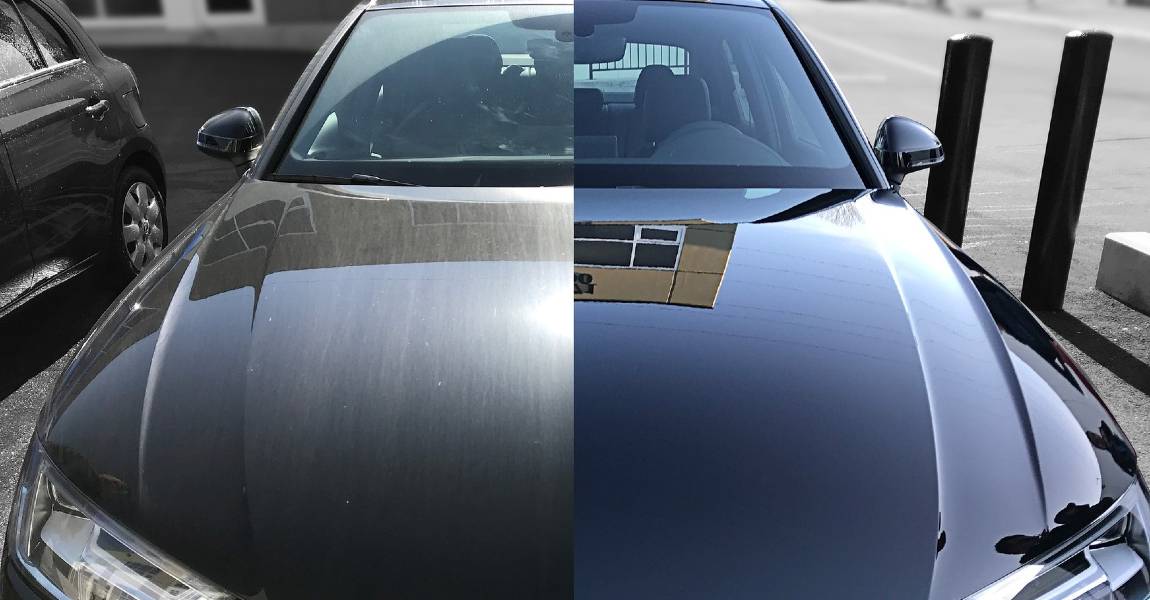Experience comprehensive auto detailing for scratch removal.
Experience comprehensive auto detailing for scratch removal.
Blog Article
A Comprehensive Guide to the Kinds Of Ceramic Finish on the Market
Ceramic coatings have actually become a critical option throughout different industries because of their unique buildings and applications. From silica-based formulas recognized for their robustness to crossbreed alternatives that merge several benefits, the selections available can be frustrating. Recognizing the nuances of each kind, including their certain advantages and optimal use cases, is essential for making informed choices. As we explore the unique qualities and applications of these finishes, the effects for performance and durability become progressively apparent, increasing inquiries concerning which kind may finest suit your requirements.
Comprehending Ceramic Coatings
Ceramic coverings are sophisticated protective solutions that have gotten appeal in different markets, specifically in automotive and aerospace applications. These layers are composed of a fluid polymer that, when healed, creates a resilient, hydrophobic layer externally of the substrate. This layer gives enhanced resistance to environmental pollutants, UV radiation, and chemical direct exposure, therefore extending the life and aesthetic appeal of the underlying product.
The fundamental component of ceramic finishings is silica, which contributes to their solidity and durability. The application procedure usually includes surface area preparation, application of the finishing, and curing, which can be accomplished with warmth or UV light. When cured, ceramic layers show exceptional bonding properties, allowing them to adhere strongly to a variety of surface areas, consisting of steels, plastics, and glass.
In enhancement to their protective attributes, ceramic coatings additionally offer convenience of upkeep. Their hydrophobic nature reduces the adherence of dirt and grime, making cleaning less complex and less constant. On the whole, the fostering of ceramic coatings stands for a significant innovation in surface defense technology, supplying both practical and aesthetic benefits throughout numerous sectors.
Sorts Of Ceramic Coatings
Numerous kinds of ceramic coatings are readily available, each made to fulfill details efficiency needs and applications - scratch repair sarasota. The most usual kinds consist of:
Silica-based Coatings: These finishings largely are composed of silicon dioxide and are understood for their toughness and chemical resistance. They are extensively made use of in vehicle and commercial applications.
Titanium Dioxide Coatings: Popular for their photocatalytic residential properties, titanium dioxide coverings are often applied in atmospheres where self-cleaning and antifungal homes are desirable, such as in building materials and automobile surfaces.
Zirconia Coatings: Identified by their high-temperature security and thermal resistance, zirconia finishings are utilized in applications such as wind turbine engines and high-performance vehicle parts.
Alumina Coatings: Exhibiting outstanding solidity and thermal security, alumina finishes are frequently utilized in wear-resistant applications, consisting of cutting tools and commercial equipment. - Auto Detailing
Hybrid Coatings: Integrating the residential properties of numerous materials, crossbreed coverings provide boosted performance characteristics, making them appropriate for one-of-a-kind and demanding applications.
Each type of ceramic coating serves distinctive purposes, enabling customers to i thought about this select the most appropriate service based on specific environmental conditions and efficiency requirements.
Advantages of Ceramic Coatings
Ceramic coatings, in certain, offer countless benefits that make them progressively preferred among manufacturers and customers alike. These coverings are resistant to scrapes, chemicals, and UV rays, ensuring that the underlying surface area stays secured over time.
Along with toughness, ceramic coatings offer exceptional hydrophobic homes, enabling for simple cleansing and maintenance. This water-repellent nature lessens the adherence of dirt, crud, and other impurities, which can lengthen the aesthetic charm and performance of the surface area. Ceramic layers can dramatically enhance thermal resistance, making them perfect for applications that withstand high temperature levels.

Application Refine
When using ceramic coverings, a careful method is necessary to achieve ideal outcomes. The application process typically starts with comprehensive surface prep work. This entails cleaning, sanitizing, and brightening the surface to get rid of all impurities, including dust, grease, and prior waxes or sealers. A clean surface area makes certain proper bond of the coating.
As soon as the view surface is prepped, the following step is to use the ceramic coating. This can be done utilizing an applicator pad or a microfiber towel, making sure even insurance coverage. It is essential to function in small areas to keep control and avoid early curing. The finish should be applied in slim layers, as thicker applications can cause uneven surfaces.
After application, the coating calls for a details healing time, generally varying from a few hours to a complete day, depending on the item. Throughout this time, it is important to avoid exposure to dampness or contaminants. A gentle buffing may be needed after healing to boost the gloss and get rid Check This Out of any kind of high areas. Following these actions diligently will maximize the effectiveness and durability of the ceramic layer, giving a sturdy safety layer for the surface.
Upkeep and Longevity
To guarantee the longevity and efficiency of a ceramic finish, normal upkeep is important. Ceramic finishings, known for their durability and protective qualities, require specific treatment routines to optimize their life-span and performance.
In enhancement to routine cleaning, regular evaluations are critical. Look for indicators of wear or damage, such as hydrophobic properties lessening or surface flaws. If essential, a light gloss might be used to rejuvenate the finishing without stripping it away.
In addition, the application of a booster spray can boost the coating's hydrophobic impacts and recover its gloss. This is particularly advantageous for finishings that have actually remained in use for an extensive duration. Ultimately, by adhering to these maintenance methods, one can significantly prolong the life of a ceramic covering, making sure that it continues to provide ideal protection against environmental elements and preserve the aesthetic appeal of the car.
Final thought

Report this page